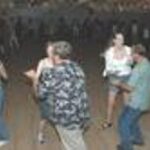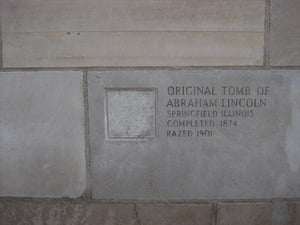Stepping is an expressive dance form that was created by African American fraternities in the 1970s. It is usually accompanied by singing and “chanting,” something that will be discussed later. Multiple participants congregate in a decided formation and are started off by a leader, sometimes called the step master, who begins a chant to kick off the step. Participants then clap, stomp, and slap body parts in unison to create a unified sound.
Black Fraternities and Sororities
The first African American fraternity was developed in December of 1906 under the name Alpha Phi Alpha Fraternity, Incorporated. In those racially charged times, African Americans in college found that it was not realistic to attempt membership into historically white organizations. Thereafter, many other African American fraternity and sororities were established, predicated on the belief that there was more to being a member of a fraternity or sorority than skin tone, class, or social status. There are currently nine black fraternal organizations officially recognized by the National Pan-Hellenic Council, also known as the “Divine Nine.
History of Stepping
Most historians agree that Phi Beta Sigma Fraternity, Incorporated, and then Omega Psi Phi Fraternity, Incorporated, were the first to start the stepping phenomenon which has become wildly popular today.
The contributions of Kwame Nkrumah of Ghana, a member of Phi Beta Sigma Fraternity, Incorporated, made stepping moves sourced directly from African culture more common. It is the tribal, African feel of stepping that makes it powerful. The incorporation of props, namely canes was first introduced to stepping by Kwame Nkrumah. One of the most popular step routines is the “Nut Cracker,” a step that uses traditional African beats and complicated movements characteristic of African dancing.
A chant is a song that contains rhythms and lyrics that are specific to that frat or sorority. For example, a popular chant of Zeta Phi Beta Sorority, Incorporated, the sister organization to Phi Beta Sigma, that goes with a traditional step starts with, “Here comes that beat�⒬� that funky Zeta beat.” It is meant to prepare viewers to listen to the intricate beats they are about to hear and make the performance more interactive. Chants sometimes include the distinctive “call” of the fraternity or sorority to further identify who is chanting.
The Here and Now
Nowadays, popular dance movies like Stomp the Yard and How She Move use complicated step dance moves that were originated by actual black fraternities and sororities. Some are copied to the letter though it is well known in black fraternal social circles that certain steps and movements are unique to particular organizations. Here are a few examples (some of these are descriptive names, not exact or sanctioned by the organization):
The Nut Cracker: Unique to Phi Beta Sigma Fraternity, Incorporated. A movement where the participant stomps twice, and then brings his hands up high in the air for a moment, claps above the head, and then claps behind the back while stepping twice again. The participant then stomps four times while bringing his clasped fists down slowly at his side.
The Dove (Flapping it’s Wings): Unique to Zeta Phi Beta Sorority Incorporated, where participants cross their arms out in front of them and then “flap” their hands up to meet the back of the other hand, to represent the movement of a dove flapping it’s wings.
The “Q” Hop: An energetic trademark movement created by Omega Psi Phi Fraternity, Incorporated where members jump high in the air, hop on one foot, pump their fists, clap, and chant.
Please see videos posted for visual information.
http://www.bsu.edu/web/pbs1914/stepping.htm
http://www.youtube.com/watch?v=XPVzFvxyES8
http://www.youtube.com/watch?v=yCrrKkp-76k
http://www.stompshow.com/information.php?info_id=3
http://www.nphchq.org/



